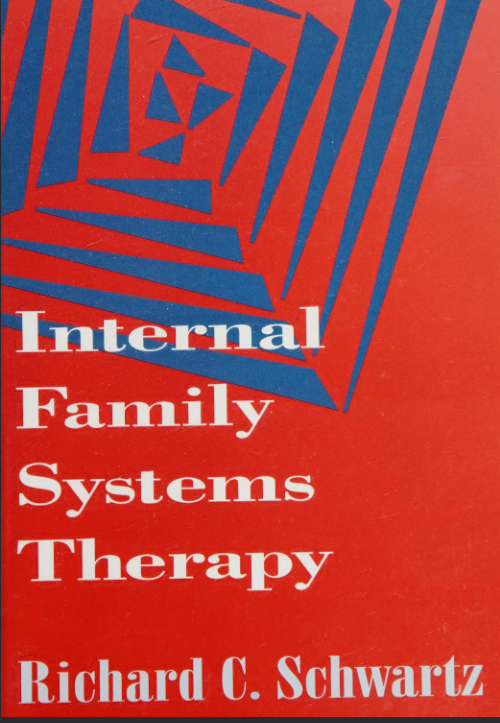Although the model presented in this book—the internal family systems (IFS) model—is unique and was developed independently of other models, it was not created from whole cloth. It extends the stream of ideas and methods emanating from two different sources: explorations of intrapsychic process and of family process. Part of the model’s uniqueness is that it brings these two streams together, creating a confluence that enriches each and also produces something new—a systemic approach to the mind. As I struggled to construct this model, I learned of others that respected the multiplicity of the mind. Each time I encountered such a model, I had a mixed reaction. On the one hand, I worried that in IFS I had simply rediscovered the wheel; each time, however, I would gradually realize with relief that although there were similarities, the IFS model was indeed a unique advance. The other reaction was a strong sense of confirmation. Here were various therapists or theorists who, indepen- dently of one another, had made remarkably similar observations regard- ing the existence of subpersonalities in all of us. Like me, none of these explorers had preconceptions about multiplicity or set out to create such models. Rather, each was led to this conclusion by listening carefully and openly to clients describing their inner lives
چکیده فارسی
اگرچه مدل ارائه شده در این کتاب - مدل سیستم های خانواده داخلی (IFS) - منحصر به فرد است و مستقل از سایر مدل ها توسعه یافته است، اما از پارچه کامل ایجاد نشده است. جریان ایدهها و روشهای ناشی از دو منبع مختلف را گسترش میدهد: کاوش فرآیند درون روانی و فرآیند خانواده. بخشی از منحصربهفرد بودن مدل این است که این دو جریان را به هم نزدیک میکند، و تلاقی ایجاد میکند که هر کدام را غنی میکند و همچنین چیز جدیدی را تولید میکند - رویکردی سیستمی به ذهن. همانطور که برای ساختن این مدل تلاش می کردم، با دیگرانی آشنا شدم که به کثرت ذهن احترام می گذاشتند. هر بار که با چنین مدلی روبرو می شدم، واکنش متفاوتی داشتم. از یک طرف، نگران بودم که در IFS به سادگی چرخ را دوباره کشف کرده باشم. با این حال، هر بار به تدریج با خیال راحت متوجه میشدم که اگرچه شباهتهایی وجود داشت، اما مدل IFS در واقع یک پیشرفت منحصربهفرد بود. واکنش دیگر یک احساس قوی از تایید بود. در اینجا درمانگران یا نظریه پردازان مختلفی وجود داشتند که مستقل از یکدیگر مشاهدات بسیار مشابهی در مورد وجود خرده شخصیت ها در همه ما انجام داده بودند. مانند من، هیچ یک از این کاوشگران پیش فرضی در مورد تعدد نداشتند یا برای ایجاد چنین مدل هایی اقدام نکردند. در عوض، هر یک از آنها با گوش دادن دقیق و آشکار به مشتریانی که زندگی درونی خود را توصیف میکنند، به این نتیجه رسیدند
ادامه ...
بستن ...
Author(s): Richard C. Schwartz
Publisher: Richard C. Schwartz IFS The Guilford Press, Year: 2023
ISBN: 0898622735,9780898622737
ادامه ...
بستن ...
ntroduction. Journey toward a New Model 1
Trusting Clients, 2; Explorers of Inner Space, 4;
Family Therapy, 5
Chapter 1. The Basic Concepts: Multiplicity 8
and Systems
Multiplicity of Mind, 11; Systems Thinking, 17;
The Example of Bulimia, 21
Chapter 2. Viewing Individuals as Systems PRT
The Importance of Seeing Individuals as Systems, 27;
Evolution of the IFS Model: A Case Illustration, 29;
The Many in the One, 32; The Self, 36; Patterns of Parts, 41;
Sally Revisited, 53; Summary, 57
Chapter 3. Case Example 61
History, 61; Context at Beginning of Therapy, 63;
Session 2, 64; Session 3, 69; Session 4, 73; Session 5, 74;
Session 6, 75; Session 7, 76; Session 8, 77; Session 9, 79;
Session 10, 80; Session 11 through 14, 81; Follow-Up, 81;
Discussion, 82
Chapter 4. Changing the Internal System 84
The Therapist-Client Relationship, 84; Introducing the
Language, 90; Discussing Internal Relationships, 93;
Entering the Internal System Safely, 95; Collaborating with
Managers, 98; Retrieving Parts That Are “Frozen in
Time”, 105; Unburdening, 108; Summary, 110
Vil
vii | INTERNAL FAMILY SYSTEMS THERAPY
Chapter 5. Methods of Inner Work: In-Sight and
Direct Access
In-sight, 112; Direct Access, 123; Cautions for Doing Inner
Work Safely, 127; Conclusion, 131
Chapter 6. The Model’s Views of Families
Development, 134; Balance, 140; Harmony, 144;
Leadership, 149; Conclusion, 154
Chapter 7. Working with Families
The Therapist’s Role: Self-Leadership and Parts
Awareness, 157; Understanding Family Process, 159;
Helping Families Change, 167; Conclusion, 186
Chapter 8. Applying the Model! at the Cultural and
Societal Levels
The Parts and Self of a Society, 187; Cultural Burdens, 188;
The Middle-Class Mainstream U.S. Context, 190;
Traditional Ethnic Contexts, 197; Transitional Families, 199;
Taxonomy of Families, 200; Contrasting Transitional and
Hyper-Americanized Families, 201
Chapter 9. Final Questions and Recommendations
Can the Model be Used Safely with All Clients?, 214;
Where Do Therapists Commonly Get Stuck?, 216;
Conclusion, 223
Appendix A. Summary Outline
Appendix B. Glossary of Concepts
Appendix C. Bibliography of Models of Multiplicity
References
Index
133
157
187
214
225
231
233
236
243
ادامه ...
بستن ...










